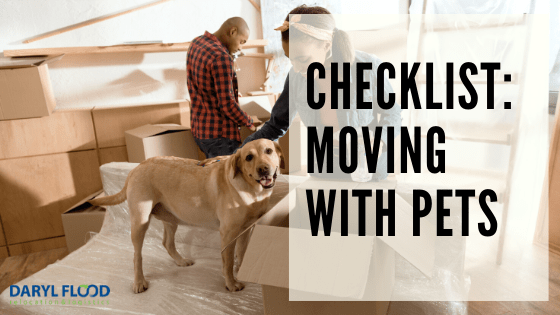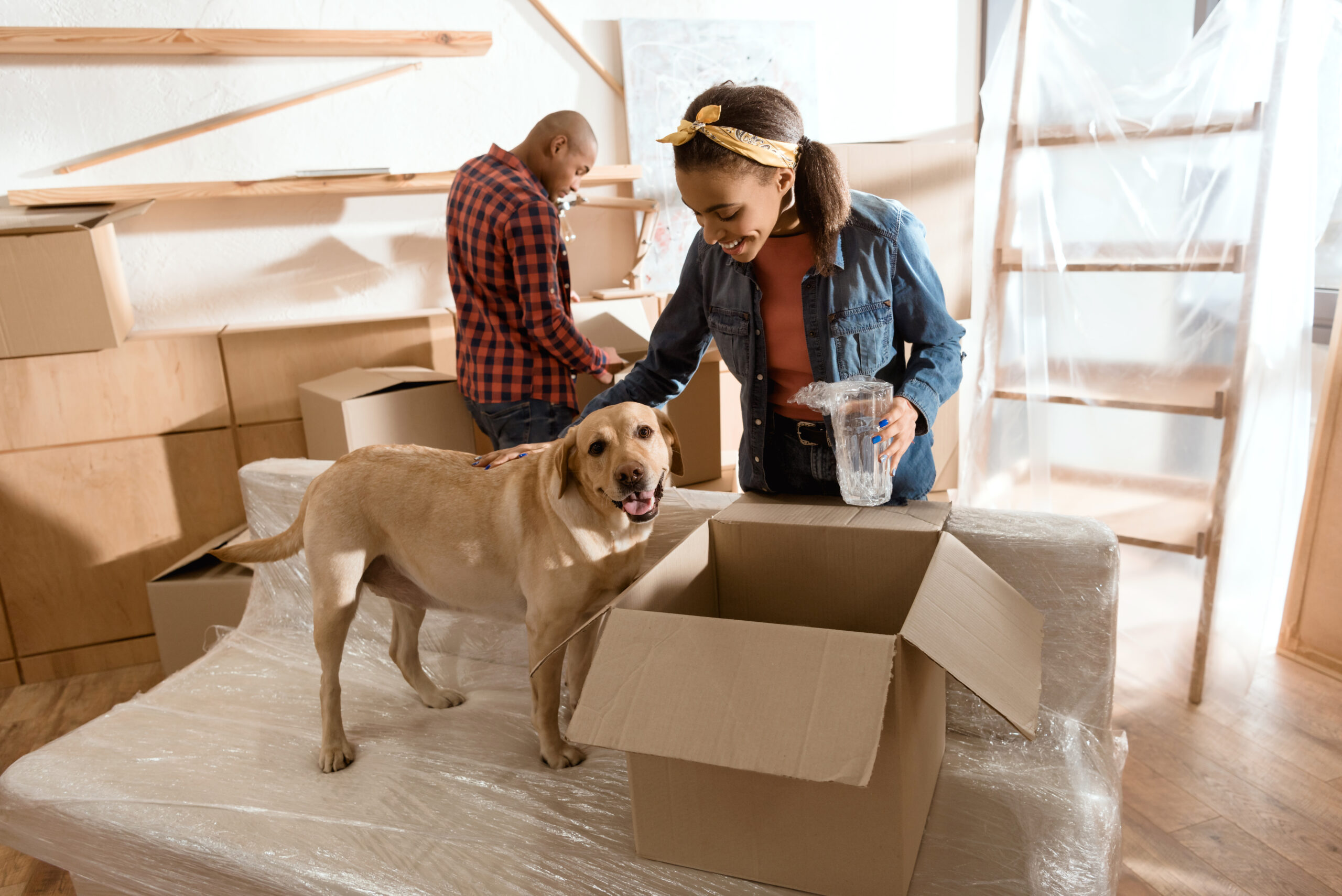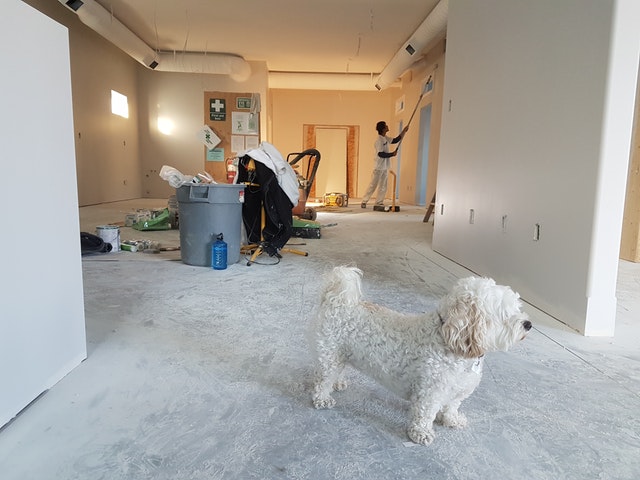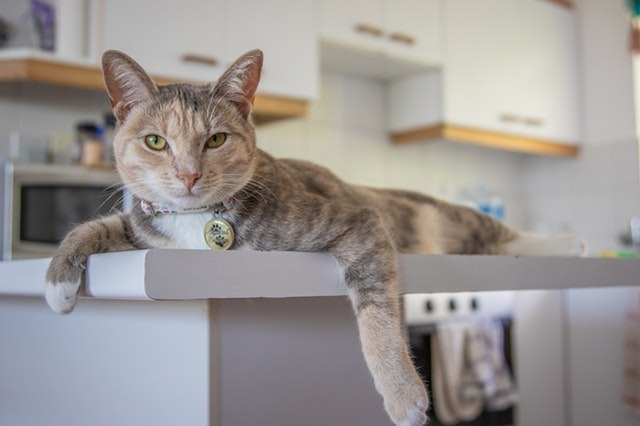Moving Tips & Resources
Checklist: Moving with Pets
Our pets become familiar and comfortable in their environment just like we do. They rely on those feelings and an established routine to feel safe and secure.
Because of this, moving can be especially stressful on pets. During a relocation, it’s important to take extra steps to ensure your pets feel at ease.
We’ve compiled a checklist of things you can do before, during and after your move to help create a smooth transition for your pet.

Before the Move
1. Obtain vet records – Ask your current provider for a copy of the latest vet records for your pet in case you need them while traveling.
This also ensures you have the records readily available when you find a new provider.
2. Ensure pets are up to date on vaccinations needed in your new location – Be sure to check the rules and regulations regarding pet vaccinations as they tend to vary from state to state.
3. Refill medications – It’s best to refill any prescriptions your pet may have to ensure they don’t run out while you’re getting settled into your new home.
4. Get a check-up – Make sure your pet is in good health before the move and safe to travel. This will minimize complications during the move process.
5. Update contact information on identification tags and microchips – It would be best to remove your old address from your pet’s current I.D. tag and just give a name and a phone number (or two) where you can be reached if you and your pet are separated during the move.
This way, your pet isn’t accidentally returned to the home you’ve just left.
6. Identify pet-friendly hotels and accommodations along your route – There are many places that offer overnight pet accommodations, but they may be hard to find last minute.
We recommend mapping out potential places to stop ahead of time and identifying hotels in the area that accept pets.
7. Pack your pets’ things last – Waiting to pack your pets’ things last can reduce panic in your pet, because they still have the comfort of their things while the chaos of packing ensues.
Delaying their packing also ensures your pet has access to fresh water and food right up until you leave the home.
8. Give pets extra attention and assurance – Moving is especially stressful on pets because you can’t tell them what’s going on.
You’ll need to offer comfort through extra cuddles, treats and attention.

During the Move
1. Board, crate or contain pets in a single room on move day – Keep your pet as safe and calm as possible by secluding them from the action on move day.
It will also prevent your pet from accidentally escaping while the door is constantly open and shut.
2. Keep meds and first aid handy – It’s a good idea to add medications and a first aid kit to your pet travel kit in case of an emergency while you’re on the road.
3. Ensure safe travel – no pets in the moving van. Avoid serious injury or death to your pet by not allowing them to ride in the back of the moving van, no matter what the circumstance.
4. Plan for regular rest stops on route – It’s important that your pet has access to potty and exercise breaks during your trip.
Plan to stop frequently for fresh air, food and water.
5. Keep pets leashed or crated during travel – Make sure your travel accommodations are safe for your pet. Keep them crated, with the crate on a flat surface, or harnessed and buckled in a pet seatbelt.
6. Keep pets hydrated – Offer water at all rest stops to ensure your pet stays hydrated.
7. Provide favorite items for comfort – Make the trip easier by offering their favorite toys or a familiar blanket to travel with to ease stress.
8. Monitor behavior – Trust your gut when it comes to your pet. Monitor their behavior and look for signs of sickness, distress or lethargy.
If your pet shows signs of any of these, find a nearest pet hospital for further examination.

After the Move
1. Find a new clinic as soon as possible in case of emergencies – It’s important to set up care for your pet immediately in the event they need medical attention.
2. Set up their new space – Your pet is in a new environment, which might make them uneasy. Set up their space like how it was in your old home to show them they belong.
3. Ease pets into your new home in small increments – Try your best not to leave your pet for long periods of time right when you move in.
Remember, they don’t quite feel comfortable yet, so your presence is much appreciated.
4. Establish your new routine immediately – Show your pet around and get back to having feedings/walks/potty breaks on a schedule. This will help your pet adjust quickly.
5. Be patient – Your pet is just happy to be with you in your new home. Give it some time, and it will feel like home to them too!

Pet Travel Kit
- Extra food supply
- Fresh water
- Medications
- Waste scooper and plastic bags
- Crate or carrier
- Leash
- Favorite toys
- Blanket
- Treats
- Newspapers and/or towels
- Flea/tick repellent
- Comb and/or brush
Pet Trip Tips: Mistakes to Avoid
- Don’t let your pet loose in a public or unfamiliar place
- Don’t leave your pet alone in a hotel room
- Don’t leave your pet unaccompanied in a car
- Don’t forget to stop to rest often
Remember, Daryl Flood Relocation & Logistics is here to help! If you have any questions about how to keep your pet safe and comfortable during your relocation, please let us know.
Our goal is to keep you, and your pets happy and stress-free!


